So I bought this stove as it appeared to be the best stove to buy and love most things about it except that when trying to use the low burn features the room smelled like smoke. I've read every thread on here I could find about others that had these issues and take even a few more steps trying to correct the problem.
The smoke smell only comes when running under level 2 on the thermostat. Called and talked to BK Corp, and was told that engineering always points back to a draft issue so I Bought myself a manometer and checked draft and on low I'm getting .05 which is where it should be on high and that was at 30f. On high im getting .10 which is to much draft so the good thing is I think we can rule out a chimney draft as a issue. I've taken apart the entire door assembly glass and and even applied high temp silicone behind the glass retainer gasket thinking that smoke is getting behind it and that didn't solve it either. I've even adjusted the latch assembly so tight that the door barley latches and it would most likely pass the dollar pull test by a factor or 2. The rope seal is heavily indented and seating perfectly.
Like the others I've read about if the stove is turned up to 2 or higher the smoke smell goes away. The smoke smell is the worst at 1-1.5 but gets even more pronounced if the fans a ran at high with the thermostat at 1.0. Not sure if that is because it is carrying the smoke away or creating a low pressure area around the door assembly making the problem worst by sucking the smell/smoke out. It is I think a smoking gun that when ran on low, even with wood only in back of the stove that the glass gets dirty only on far sides of the glass, indicating that there is a air pattern carrying smoke to the edge of the door right up to the rope seal on both the latch and hinge side but it only stinks on the hinge side.
Moisture content is .12 burning oak.
Has anyone figured this out yet?
Thanks you.
It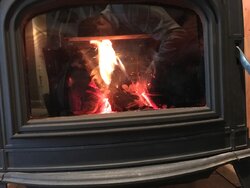
Any ideas on where to go from here?
The smoke smell only comes when running under level 2 on the thermostat. Called and talked to BK Corp, and was told that engineering always points back to a draft issue so I Bought myself a manometer and checked draft and on low I'm getting .05 which is where it should be on high and that was at 30f. On high im getting .10 which is to much draft so the good thing is I think we can rule out a chimney draft as a issue. I've taken apart the entire door assembly glass and and even applied high temp silicone behind the glass retainer gasket thinking that smoke is getting behind it and that didn't solve it either. I've even adjusted the latch assembly so tight that the door barley latches and it would most likely pass the dollar pull test by a factor or 2. The rope seal is heavily indented and seating perfectly.
Like the others I've read about if the stove is turned up to 2 or higher the smoke smell goes away. The smoke smell is the worst at 1-1.5 but gets even more pronounced if the fans a ran at high with the thermostat at 1.0. Not sure if that is because it is carrying the smoke away or creating a low pressure area around the door assembly making the problem worst by sucking the smell/smoke out. It is I think a smoking gun that when ran on low, even with wood only in back of the stove that the glass gets dirty only on far sides of the glass, indicating that there is a air pattern carrying smoke to the edge of the door right up to the rope seal on both the latch and hinge side but it only stinks on the hinge side.
Moisture content is .12 burning oak.
Has anyone figured this out yet?
Thanks you.
It

Any ideas on where to go from here?
Last edited by a moderator:


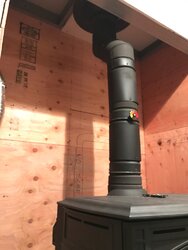
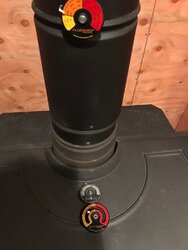
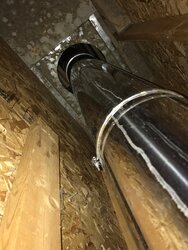
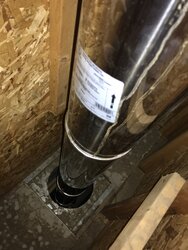
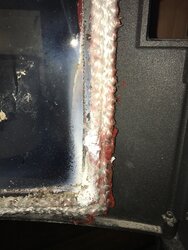
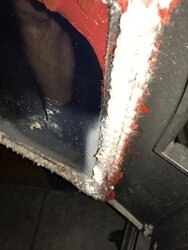
 . That stove was fully loaded with wet appearing drippy creo! No wonder they had trouble. Possibly a bit more hot burn time and not turning the stat soooo far down will cure the issue? Actually I have figured out that my setup is only capable of running so low without stink. I like the cat probe to read 1/3,1/2 up the scale early in the burn. Anything less on the cat probe early on and its burning to slow. And stinks. Thinking about pulling the cat probe and covering the hole for a load as a experiment. Not that I am suffering from a irritating stink often. FWIW.
. That stove was fully loaded with wet appearing drippy creo! No wonder they had trouble. Possibly a bit more hot burn time and not turning the stat soooo far down will cure the issue? Actually I have figured out that my setup is only capable of running so low without stink. I like the cat probe to read 1/3,1/2 up the scale early in the burn. Anything less on the cat probe early on and its burning to slow. And stinks. Thinking about pulling the cat probe and covering the hole for a load as a experiment. Not that I am suffering from a irritating stink often. FWIW.